Bites are the first sign of bed bugs that most people notice. This page will help you determine if bed bugs are the cause of your mystery bites.
Table of Contents
Bed Bug Bite Symptoms
Bed Bug Biting Habits and Symptoms
- Bites appear grouped in lines of two or more
- Bites appear after periods of rest (naps, sleep, reclining, etc)
- Bites appear every 3 days to 5 days early on
- Bites appear on skin exposed during sleep
- Bites typically found in areas with less hair
- Marks and irritation lasting up to two weeks or as little as half a day
- Bitten areas show flat or slightly raised red welts, bumps, or rashes
- Bitten areas exhibit a deep persistent itch, worse than mosquito bites
Mystery bites are the first warning sign that an infestation might be brewing.
Reactivity to Bed Bug Bites
These signs are only relevant if you are reactive to bed bug bites in the first place.
For some people, signs appear almost immediately. Others take 2-3 days before feeling the itch. Others do not react at all.
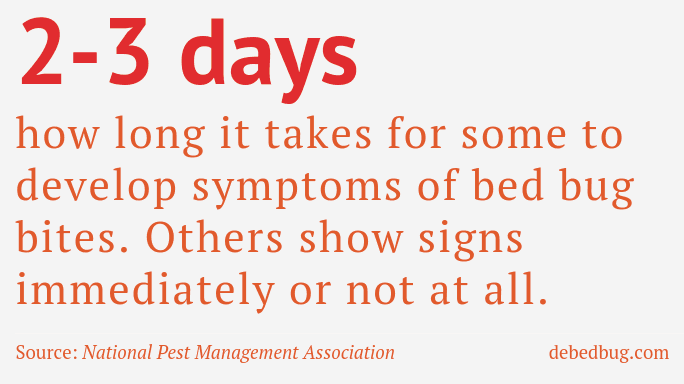
Reactivity to bed bug bites is actually a blessing in disguise. Being itchy isn’t fun, but being reactive can tip you off to an infestation early on. Bed bug infestations are much easier to deal with in their early stages.
Folks who are not reactive won’t know they have a problem until it becomes a full-blown infestation.

Bites and rashes can be caused by other bugs and environmental factors like allergies. This is why we recommend finding at least two signs of bed bugs before beginning treatment.
The symptoms page will show you exactly where and what to look for.
Where Do Bed Bugs Bite?
Look for bites anywhere that skin is exposed during sleep.
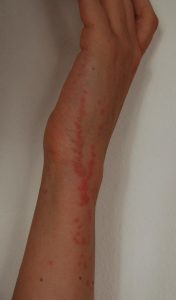
Bed bugs prefer to feed on areas of the skin with less hair.
If bites are showing up in hairy spots that you’ve covered during sleep, you might not be dealing with bed bugs.
What Do Bed Bug Bites Look Like?
The way they look can vary from person to person. Some people get large itchy red rashes while others may never show signs at all.
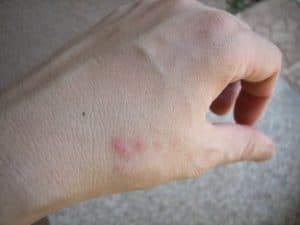
Bed bug bite rashes look like any other rash. Bites from other bugs, skin irritating conditions like allergies and dry skin, and even dry air can cause similar rashes.
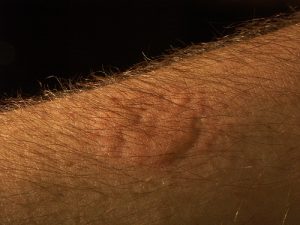
Check out this page for more pictures of bed bug bites on real people.
When Do Bed Bugs Bite?
If you are dealing with bed bugs, you can count on new bites appearing overnight or after a nap.
This is true for most, although less reactive folks may take much longer to show bite symptoms.
Bed bugs will adjust to your sleeping habits. Sleeping during the day won’t solve the issue, they will simply change their feeding habits.
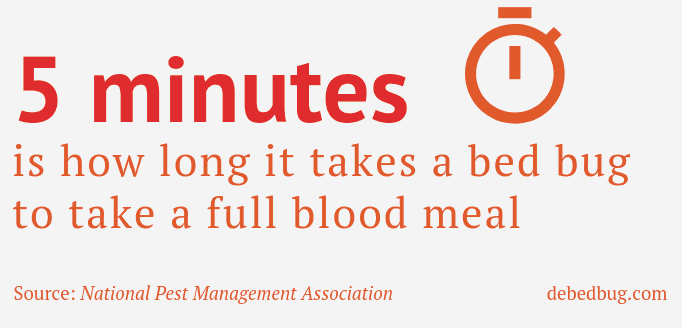
The process of biting and extracting a full meal takes about 5 minutes. A bed bug can ingest 7 times its weight in a single meal.
Bites in Rows
When it comes to bed bug bites, straight rows of 3 or more are the first sign many people will warn you about. If your bites are erratic and not grouped in any way, you might assume the cause could be something else.
That being said, there is no rule that all bed bugs will bite 3 times in a neat row every time. There is also no rule that says other bugs can’t leave similar bites in a row.
Fleas and ticks like to target ankles and exposed skin and leave similar marks.
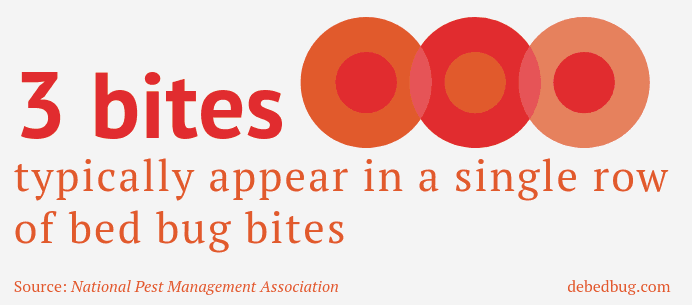
This is why it is so easy to misdiagnose your problem based on bites alone.
The best way to prevent getting bitten is by bug proofing your bed.
We get into exactly how that’s done on our preventing bed bugs page. The page covers all the preventative measures you can take today.
Why Do Bed Bug Bites Itch?
Most people will have no idea they’ve been bitten until the bug has finished feeding and is long gone.
Itching happens because of the chemical cocktail bed bugs use when biting. A numbing chemical and powerful anticoagulant work together to keep blood flowing undetected. That gives bugs plenty of time to have a meal and escape.
Bite symptoms are actually symptoms of your body fighting those invading chemicals.
While some people react violently and immediately, up to 30% of people do not react at all. Other people are less reactive and begin to itch several hours or even days after being bitten.
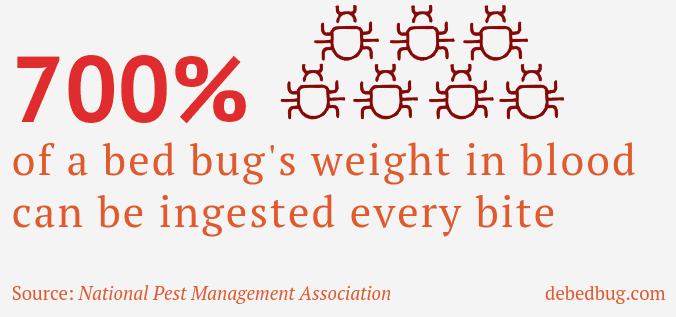
Although bed bug bites do not transmit diseases, they can be dangerously itchy.
It’s difficult not to itch, especially for those who are highly reactive. It’s natural to scratch while unconscious and asleep too.
To help stop the itching, we’ll cover how to stop bed bugs from getting onto your bed in the next section.
We also have a page on how to treat bed bug bites so you can control the itching.
How to Stop Bed Bug Bites
While going through bed bug treatment, expect to be bitten a couple of times.
If you can afford it, temporarily moving out is the only way to stop bites right away. A professional will be able to deal with your infestation while you’re away.
Bed bugs are known as the hitchhiking bug. Don’t let them hitch a ride into your friend’s or family’s homes.
Only bring laundered clothes and verified bed-bug-free belongings if you take this approach.

How to Protect Your Bed
For those facing bugs while staying at home, reducing bites is easy if you follow a few guidelines.
Guide to Protecting Your Bed
- Remove and clean all bedding at high heats twice a week. Dryers should reach 140˚F.
- Move beds away from walls and other overhanging furniture and light fixtures.
- Be sure that nothing hangs off the bed and touches the floor.
- Secure your mattress, box spring, and pillows in encasements.
- Use bedpost interceptors to monitor populations and prevent bites.
- Shower and wear clothes that have been through the dryer before getting in bed.
- Use bug-proof containers to keep your fresh clothes bug-free.
By protecting your bed, you will effectively deny bed bugs the food they need to reproduce. This helps you take control in a situation that can feel uncontrollable. You’ll get better rest too.
Keeping bedding off the floor is especially important and difficult.
Taking these steps will stop most bites. The only way to completely stop them is by getting rid of all bed bugs.
You can read a more in-depth explanation of how to keep bed bugs off your bed here.
Once you complete the steps above, you should find yourself free of bed bug bites even during an infestation.
We’ve created comparison charts that make choosing the perfect encasement easy.
Click any product name or picture to go to the corresponding review:
 |  |  |  | |
|---|---|---|---|---|
| AllerZip Smooth | SafeRest Premium | SureGuard | Sleep Defense | |
| Lab Tested | Yes | Yes | Yes | Yes |
| FDA Registered | Yes | Yes | No | No |
| Zipper | BugLock 3-part | Velcro, Micro-Zipper | Velcro, "Zipper Technology" | Velcro, Zip-tie |
| Material | Cotton, polyester terry fabric | Polyester knit fabric | Polyester knit fabric | Polyester knit fabric |
| Sleeping Surface | Cotton | Cotton Terry | Cotton Terry | Polyester knit fabric |
| Rating | 100 / 100 | 96 / 100 | 80 / 100 | 68 / 100 |
| Why Buy? | Best Overall | Great Value | Budget Comfort | Budget Friendly |
| Relative Cost | $$$ | $$ | $$ | $ |
| Full Review | View | View | View | View |
Interested in box spring and pillow encasements? Check out the encasements page.
As for traps and interceptors, we host a frequently updated page dedicated to reviewing the best on the market.
Click any product name or picture to go to the corresponding review:
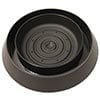 | 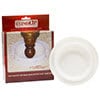 | 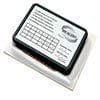 | 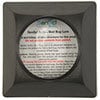 | |
|---|---|---|---|---|
| LightsOut | ClimbUp | BB Alert | SenSci | |
| Bait | You | You | You | You, Optional Lure |
| Trap | ABS Pitfall | Powdered Pitfall | Comfy Harborage | Pitfall |
| Lifespan | Forever | Forever | 1 Infestation | Forever |
| Rating | 100 / 100 | 92 / 100 | 92 / 100 | 74 / 100 |
| Relative Cost | $$ | $ | $$ | $$ - $$$ |
| Full Review | View | View | View | View |
See the treatment page for everything you’d want to know about getting rid of bed bugs yourself
Bug Bug Treatment Planner Printable
The printable below will do a lot to help you prevent bed bug bites for the rest of your life.
To get the full resolution version of this printable and several more, check out our helpful Debedbug ebook.
The ebook includes printables and condensed information in one convenient place. Try it for free today!
Click here for more details.
Symptoms Mistaken for Bed Bug Bites
All sorts of things can lead people to believe they have a bed bug infestation when they actually don’t. It’s an easy mistake to make since bed bug signs are subtle and need some know-how to find.
The media often highlights dramatic infestations on planes and in public places. This has given many people a general feeling of paranoia which increases misdiagnoses.
Bed Bug Bite Impostors
- Other biting bugs (fleas, ticks, gnats, mosquitoes, lice, etc.)
- Environmental factors (fabrics, insulation, upholstery, detergent, air conditioning, etc.)
- Genetic factors (allergies, eczema, etc.)
- Imagined symptoms (insect phobias, paranoia, stress)
Making sure you’re dealing with the right pest saves your money, time, and unnecessary exposure to chemicals.

You can find photos of more lookalikes on the pictures page.

Sometimes, other bugs are sometimes blamed when folks actually do have bed bugs.
Either way, the importance of an accurate diagnosis is the same.
To avoid misdiagnosis, look for several symptoms of bed bugs. The symptoms page was written to help you find the 5 signs of bed bugs. The page shares exactly where and what to look for.
Gloss over it before spending money and exposing yourself to pesticides.
We also have a page of pictures dedicated to showing you bites on real people to help you compare.
What Not To Do
Do not begin randomly treating for bed bugs with chemicals, bug bombs, and hardware store “solutions.” This is a great way to spread your problem deep into your home as well as your neighbors’ homes. These products do not kill bed bugs.
Do not buy an encasement that isn’t well rated. This is your first and last line of defense. Invest in peace-of-mind and good sleep by choosing an encasement of decent quality.
Do not try to keep them off by wearing more clothes. They can bite through thin fabrics and can crawl under your clothes anyways. You’re only serving to concentrate bites on your face and other parts that have to have exposed.
For a more don’ts, give the Bed Bug Treatment Myths post a look.
Some of these mistakes are hazardous to your health and the health of your housemates.
You can read reviews and all about the best bed bug killing products on the market at this post. Having the right tools for the job is crucial.
Do Bed Bug Bites Spread Disease?
People often assume that bed bugs transmit diseases. It makes logical sense, seeing as fleas, ticks, and mosquitoes do. Luckily, bed bugs absolutely do not spread disease.
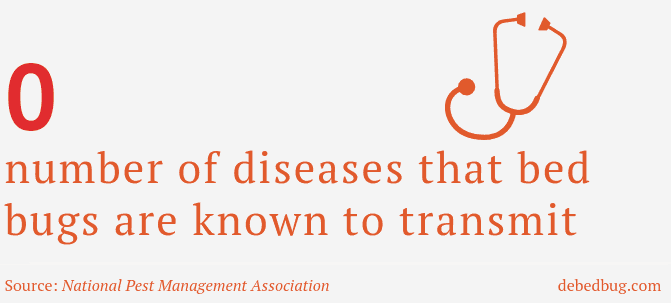
Bed bugs carry different diseases but they do not transfer them outside of extreme fringe cases.
The Center for Disease Control and Prevention (CDC) confirms this.
Using topical antibiotics and antihistamines prevents nighttime scratching.
Cases of bed bugs transmitting diseases tend to be exceptional. Recently fed bugs getting crushed over open wounds or people exposed to large quantities of bed bug feces make up the bulk of these cases.
These are unlikely scenarios outside of extreme infestations.
Potential Health Complications
While bed bugs do not actively transmit diseases, they do have the potential to create a variety of health complications.
Bed Bug Bite Health Complications
Mental health particularly tends to suffer when people are forced to deal with prolonged infestations.
Mental Health
The most common health effect that bed bug sufferers take on is mental.
Paranoia at home, insomnia, and a constant sense of discomfort are normal. All these symptoms are diseases in their own rights as they affect your everyday life.
Psychologists have even shown that severe infestations can lead to signs of post-traumatic stress disorder.
Mild Allergic Reactions
Some have especially aggressive reactions against chemicals bed bugs inject during feeding.
Those unlucky few that are highly allergic to the compounds are at risk of a severe reaction, as with any allergy.
Mild reactions include persistent itching and the appearance of pronounced rashes and welts.

Severe Allergic Reactions
Serious allergic reactions may induce a loss of breath and vomiting, or even heart attack and shock.
Another reported danger in extreme cases is anemia. Anemia develops when you lose an excessive amount of healthy red blood. Symptoms of anemia may include fatigue, dizziness, and pallor.
These symptoms could only come up in the most severe cases. You’d have to allow a heavy infestation to feed for an extended period for anemia to develop.
Scarring Caused by Itching
Some scarring is a normal product of dealing with bed bug bites. Their bites are often cited as being itchier than those left by mosquitoes.
Excessive itching will eventually lead to broken skin that can become infected. This is why it is important to treat bites with over-the-counter or home remedies.
Open wounds should be protected with a bandage to stop yourself from itching while you sleep.
When to Seek Medical Help
Medical attention will normally stop or completely fix most extreme reactions.
Outside of extreme cases, medical treatment is almost never necessary.
Although they don’t spread disease, the CDC and the United States Department of Agriculture (USDA) consider bed bugs a public health pest. This is because of the physical and mental trauma they pose.
Most other pests on the list famously spread diseases and infections.
Thanks for Reading!
If you take one thing away from this post, it should be that bites alone are not a reliable method of identifying bed bugs.
Treating before finding proof is asking for headache.
Save yourself time, money, exposure to chemicals, and stress. Check for the other 5 signs of bed bugs before beginning treatment.
If you find bed bugs, comprehensive treatment is the only true fix for your problem.
Prevention is always a good idea. A little bit can save you a lot of grief. Prevention is the best form of medicine!
For more on what you’ll need to fight bed bugs, check out the page on bed bug tools.
References
https://debedbug.com/references/
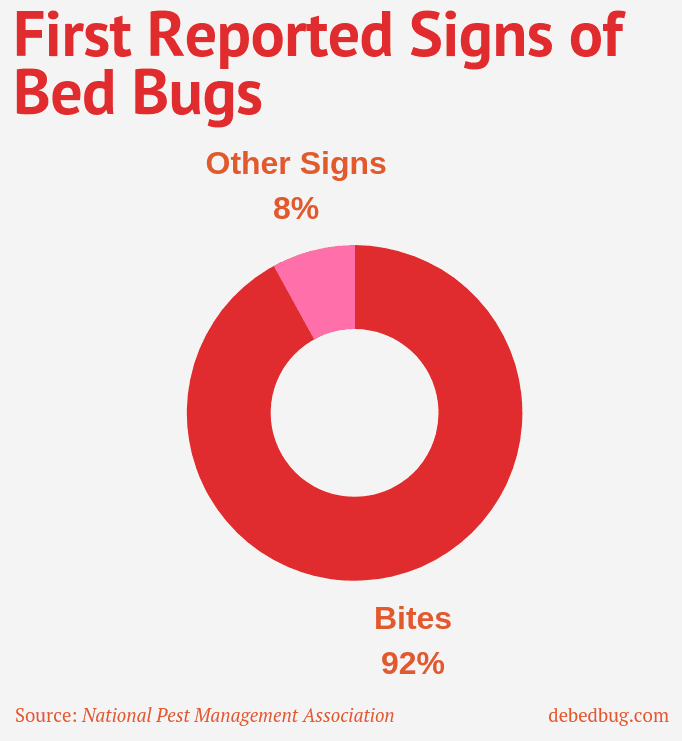



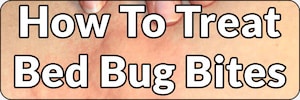
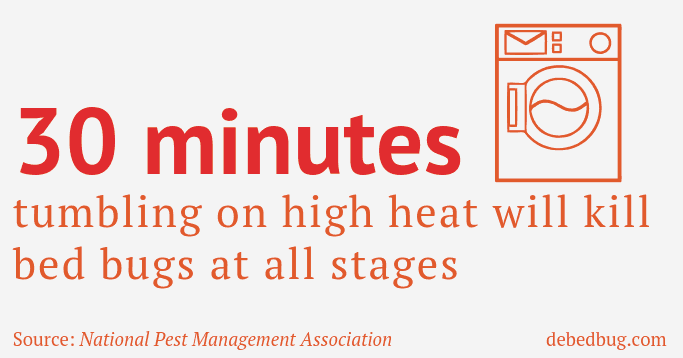




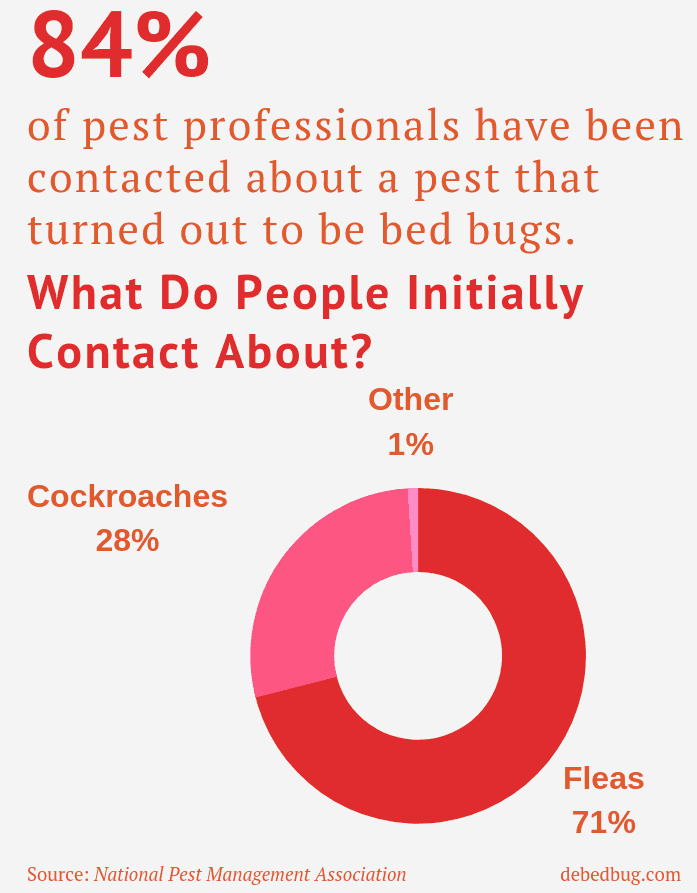

Leave a Reply